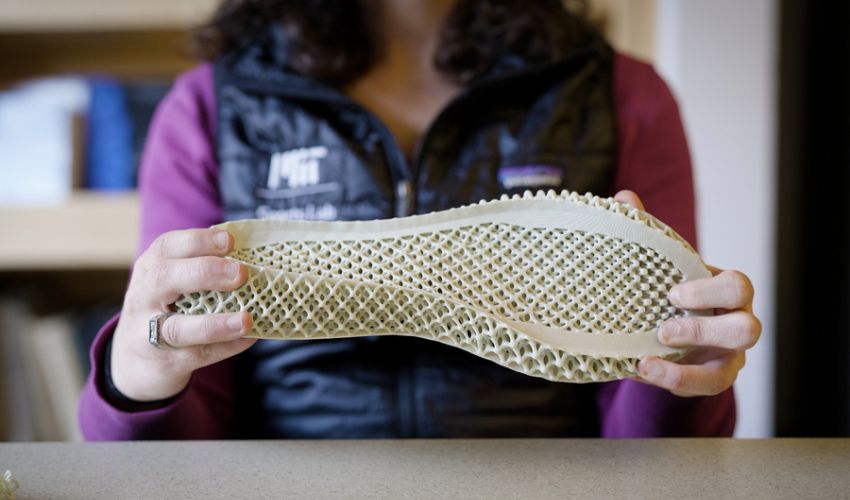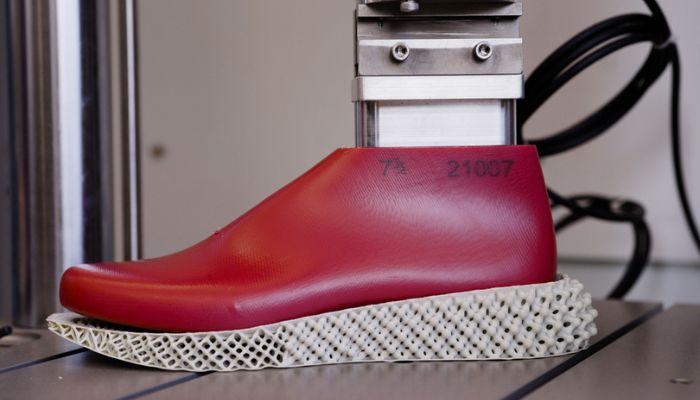New Model to Lead to Even Better 3D Printed Shoes

Nowadays, it seems that there is a never-ending quest for what could be considered the “perfect” shoe. In these efforts, 3D printing is often the technology of choice, as it allows for fully customized shoes fit to the customer. But how do we know that they are working as expected? What about finding a way to optimize based on running style or on whether someone is doing a marathon or a sprint? Now we may know, thanks to a model developed by MIT engineers that is able to predict the optimal running shoe design for any given runner, including for shoes that have been 3D printed.
Running is one of the most popular forms of exercise today, with about 50 million American (or about 15% of the U.S. population) engaging in it in 2021 according to information from Statista. But the type of running and the type of runner can vary greatly, hence the vast selection available on the market today. 3D printing offers another alternative by allowing for shoes that are customizable to each runner, with companies like adidas, Zellerfeld and more already jumping on the trend. But every runner is unique, as is the shoe, and what works for a career marathoner and someone who is just beginning will not be the same and manufacturers need to know that their shoes will work.

Researchers tested the stiffness of 3D printed midsole designs on an Instron machine in order to mimic footsteps
That is why shoe designers chose to turn to MIT in order to find a way to optimize the performance, including of 3D printed shoes. Anette “Peko” Hosoi, a professor of mechanical engineering at MIT and a co-author of the paper, explains, “With 3D printing, designers can tune everything about the material response locally. And they came to us and essentially said, ‘We can do all these things. What should we do?” This model is the response.
A New Model That Can Predict 3D Printed Shoe Performance
According to Sarah Fay, a postdoc in MIT’s Sports Lab and the Institute for Data, Systems, and Society (IDSS), the model could open up the way for developing 3D printed shoes that are both novel and high-performing. Indeed, the tool is expected to push the boundaries of sneaker design even further, hence the connection as well with additive manufacturing. So much so that it was tested on 3D printed midsoles with scaffolds that are supposed to give certain bounce or stiffness in specific locations.
How was this done? Thanks to calculations done by the researchers, the model is able to simulate changes in gait based on height, weight and leg length as well as a shoe’s material properties including stiffness in the front and back midsole. By combining these with what Fay and Hosoi called the “biological cost function” (described as a quality that a runner may not be aware of but nevertheless will try to minimize), they were able to create a model that accurately predicts gait. More specifically, they found that runners tend to minimize the impact the feet make with the treadmill and the amount of energy expended by their legs. These can thus be optimized depending on the shoe.
Fay concludes, “We’ve allowed for enough flexibility in the model that it can be used to design custom shoes and understand different individual behaviors. Way down the road, we imagine that if you send us a video of yourself running, we could 3D print the shoe that’s right for you.” You can learn more about the model HERE or in the video below.
What do you think of this new model for shoe performance, including 3D printed ones? Do you think it will change how they are made? Let us know in a comment below or on our LinkedIn, Facebook, and Twitter pages! Don’t forget to sign up for our free weekly newsletter here, the latest 3D printing news straight to your inbox! You can also find all our videos on our YouTube channel.
*All Photo Credits: Melanie Gonick, MIT








Great application of 3D Printing and can be used by professional athletes to enhance the performance.
Can the 3D printer print the complete shoe, upper and bottom with different physical properties in one go or it can only print midsole i.e one component of the shoe?
Can it be commercialized? How much a pair of component cost?